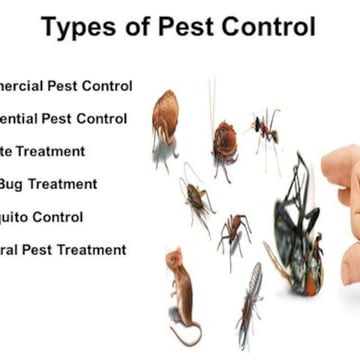7 Simple Techniques For Pest Control
Fascination About Pest Control
Table of Contents8 Simple Techniques For Pest ControlLittle Known Questions About Pest Control.See This Report on Pest ControlOur Pest Control Ideas5 Easy Facts About Pest Control Shown
Examine plants very carefully (tops of leaves, bases of leaves, stems, and dirt) before growing to be certain they are clean. Take into consideration growing identified as immune to insects. Immune cultivars are those that repel, are unattractive to, or otherwise disagree as food for sure pests or that hold up against feeding by particular pests with little decrease in return or quality.If deer are a trouble in a yard, select a plant that is normally immune to deer predation over a plant that is more eye-catching to deer. Growing 2 comparable plants in successive years tends to increase parasite problems.
Some insects hibernate in the dirt or clutter around plants or lay eggs in or on the host plant. Usage relevant crops in a site just once every 3 or 4 years.
Plant turning is most efficient on parasites that develop on a few plants. Prevent placing all plants of one kind with each other; rather spread them throughout the garden (Number 85). Take into consideration alternating groups of various plants within rows or patches. Pests that end up being serious on cabbage possibly likewise infest nearby mustard, broccoli, and collards, but they might not infect cabbage planted on the other side of the yard.
Our Pest Control Diaries

If the weeds are carefully related to the crop plants, they can nurture bug bugs and ought to be removed. Parasites with a large host rangesuch as armyworms, crickets, cutworms, flea beetles, grasshoppers, lygus insects, slugs, snails, stink insects, and thripsoften live in slender locations and can move to neighboring desirable plants.
It is crucial to cut weeds prior to a crop is established to avoid pests from relocating to the preferable plants. Weeds can be a forage, nectar, or pollen resource for beneficial microorganisms. Milkweed (Asclepias spp.) is the larval plant to the emperor butterfly. Weeds that draw in pests can be a feeding ground for birds.
Getting The Pest Control To Work
The blossoms of thistle, plantain, knotweed, and dandelion are very important to honey populations. Getting rid of weeds after blooming yet prior to seed collection offers food for the honey bees however maintains the weeds from proceeding to spread out. Another way to handle insect bugs is to plant a plant that is very eye-catching to bugs and after that treat the catch crop with insecticide.
Plant turning is a valuable cultural approach for minimizing bug and illness concerns, however several gardeners do not have the area to completely execute this practice. Where space is limited, it might be best to permit the yard to Find Out More lay fallow for a year or 2 or even more. Think about elevated beds with new dirt or plant in containers when you recognize a condition trouble exists.
Leave a couple of inches of room around the trunk of the plant when mulching. Scot Nelson Flickr Figure 84. Crop turning is important.

Pest Control for Beginners
Nearly any kind of large non-venomous insect can be chosen off at any kind of stage. To prevent the task of hand-squashing the insects, knock the bugs and egg clusters into a coffee can or quart jar with a percentage of water and a little bit of recipe detergent. Insect traps can help with discovery and monitoring.
These traps do not capture some wingless types, as well as those species active just during the day (diurnal) as opposed to energetic during the night (nighttime). Scent traps are utilized for finding the presence of bugs or in some cases for disrupting insect mating practices. Adult ladies generate and release a chemical odor attractive to males of the same species.
Rainfall, awesome temperature levels, wind rate, and wind direction my site can reduce the lures' efficiency. Warm, sunshine, or inappropriate storage can damage fragrant attractions. The very best success occurs when the parasite density is reduced and activity into the area is marginal. Some physical traps are easy to make from materials around the home.
All About Pest Control
Mix 1 quart of clay with 2 gallons of water and 1 tablespoon of liquid soap in a sprayer. Continually upset the sprayer to avoid clumping of the clay. Reapply each to 3 weeks. This barrier is precautionary; it will certainly not work if an insect parasite is currently developed.